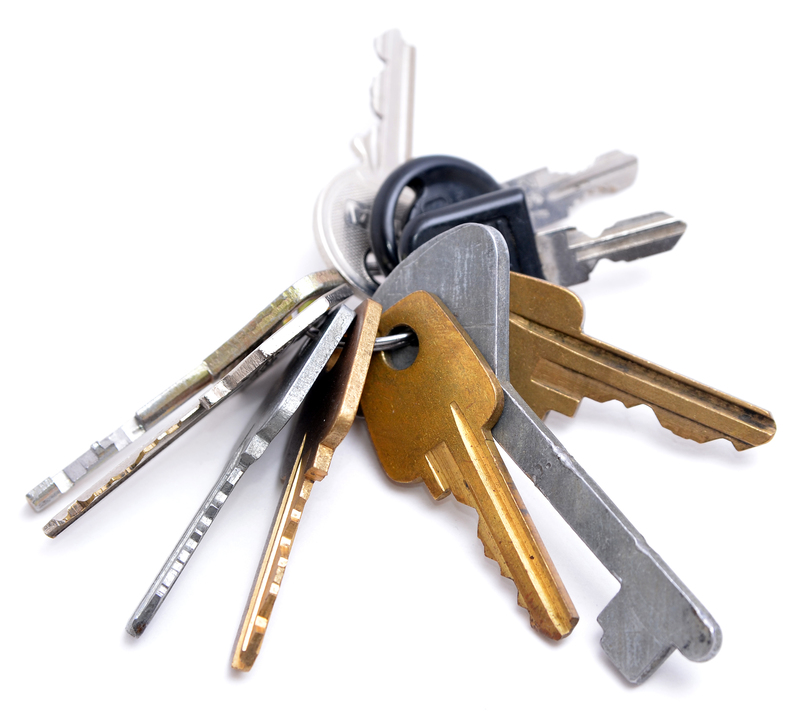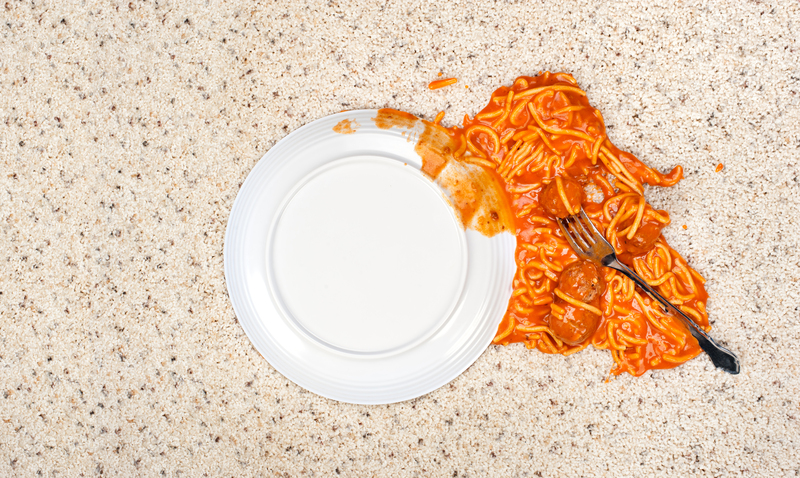Say Goodbye to Stubborn Burnt-on Stovetop Residue with These Cleaning Hacks
Posted on 27/05/2025
Say Goodbye to Stubborn Burnt-on Stovetop Residue with These Cleaning Hacks
Is your kitchen's stovetop marred by stubborn, burnt-on residue that just won't budge no matter how hard you scrub? You're not alone. Burnt-on stove stains are among the most frustrating household cleaning challenges, but with the right tools, methods, and clever cleaning hacks, you can restore your stovetop's shine and keep it sparkling clean with less effort. In this comprehensive guide, we'll walk you through top cleaning solutions, professional tips, and preventative strategies so you can confidently say goodbye to stubborn burnt-on stovetop residue for good.
Understanding Stovetop Residue: Why Burnt-on Messes Are So Tough
Before diving into effective cleaning hacks for burnt-on stovetop residue, it's crucial to understand why these stains form and why they're tough to clean. When food or spilled liquids come into contact with a hot surface, they quickly dry out and fuse to the stovetop material. Over time, repeated heating and exposure to spillages harden these substances, sometimes forming layers that are nearly impossible to scrub away with ordinary dish soap.
Most stovetop surfaces fall into one of these categories:
- Gas cooktop grates and burners (often cast iron or porcelain-coated)
- Electric coil burners
- Glass or ceramic stovetops
- Stainless steel stove surfaces
Each surface requires a slightly different approach, but the hacks below will help you tackle even the most persistent stovetop stains and burnt-on spills with confidence.

Preparation: What You'll Need Before You Start Cleaning
Gather your cleaning supplies before attacking that stubborn residue. Here are some essential tools and natural products which are safe for all stovetop types:
- Microfiber cloths or soft sponges (avoid steel wool on delicate surfaces!)
- Baking soda
- White vinegar
- Lemon juice (optional, for natural degreasing)
- Spray bottle
- Plastic scraper or old plastic card
- Dish soap with good degreasing power
- Paper towels
- Hydrogen peroxide (for extra-tough stains)
- Disinfecting wipes (for sanitizing afterward)
Remember: Unplug or turn off the stove and make sure all surfaces are cool before you begin cleaning. Safety first!
Hacks to Remove Burnt-on Residue from Different Stovetop Types
1. The Baking Soda and Vinegar Power Duo
For both glass stovetops and stainless steel cooktops, baking soda and vinegar are an unbeatable combination. Here's a step-by-step method to remove burnt-on stove stains naturally:
- Sprinkle a generous amount of baking soda all over the stubborn burnt areas.
- Fill a spray bottle with equal parts white vinegar and water, then spray the baking soda. The mixture will fizz, breaking down the burnt residue.
- Let it sit for 10-15 minutes. This waiting time allows the fizzing action to lift the grime.
- Use a microfiber cloth or sponge to scrub gently in circles, focusing extra pressure on persistent spots.
- Wipe away the residue with a clean, damp cloth, then dry thoroughly.
This hack is gentle yet effective, perfect for regular stovetop maintenance and for tackling tough, stuck-on residue.
2. Steam Clean Your Stovetop
Steam is a safe and powerful ally for removing sticky, burnt-on buildups without harsh chemicals. To steam clean your stovetop:
- Soak a towel in very hot water and wring it out just enough so it's not dripping.
- Lay the towel over the burnt residue and leave it for 15-20 minutes.
- Remove the towel and use a plastic scraper or card to gently lift softened gunk.
- Wipe the area clean with a microfiber cloth.
This method is particularly effective for glass and ceramic stovetops where you want to avoid scratches.
3. Hydrogen Peroxide Paste for Extremely Stubborn Stovetop Stains
When vinegar and baking soda aren't enough to remove stubborn burnt-on stove residue, try a hydrogen peroxide paste:
- Mix hydrogen peroxide with enough baking soda to form a thick paste.
- Spread the paste on the burnt areas, covering them completely.
- Let it sit for 30 minutes or longer if needed.
- Scrub with a soft sponge, wipe with a damp cloth, and dry.
Always do a spot test on an inconspicuous area before using hydrogen peroxide, especially on colored or enameled surfaces.
4. Natural Lemon Degreaser Hack
Lemon juice is a natural degreaser and stain fighter, perfect for removing burnt-on grease and residue from all stove types:
- Cut a lemon in half and rub it directly on the stubborn burnt marks.
- Let the juice sit for up to 15 minutes.
- Sprinkle a little baking soda over the lemon juice for increased fizzing action.
- Wipe clean with a damp microfiber cloth.
This method leaves your kitchen smelling fresh and your stovetop shining!
5. Dish Soap and Hot Water Soak for Removable Stove Parts
Gas burner grates, electric coils, and knobs can be especially tricky because they're prone to heavy buildup and are hard-to-reach. Here's how to clean them:
- Remove grates, burner covers, and knobs from your stove (refer to your manual).
- Fill your sink with very hot, soapy water (add a squirt of degreasing dish soap).
- Soak all pieces for 30 minutes to 1 hour.
- Use a non-scratch scrubber or old toothbrush to dislodge stubborn gunk.
- Rinse thoroughly, dry, and replace.
*Tip:* For extra-burnt debris, make a baking soda paste and scrub after soaking.
6. Razor Blade Scraper for Glass and Ceramic Stove Tops (Use With Care!)
For really stubborn, baked-on stains on glass or ceramic stovetops, a razor blade scraper can be a last-resort savior.
- Wet the surface to soften residue and avoid scratching.
- Gently slide the razor blade at a 30-degree angle under the residue, applying minimal pressure.
- Wipe clean and repeat as needed.
Warning: Never use a razor blade on stainless steel or enameled surfaces. Be extremely careful to avoid scratches and injury.
Preventive Hacks to Keep Burnt-on Residue Away
Once you've banished burnt-on gunk from your stove, keep it that way! Here are simple habits and hacks to ensure your stovetop always looks its best:
- Wipe spills immediately: Hot food or liquids are much easier to clean when fresh.
- Use burner liners or covers where possible to catch and contain drips.
- Deep clean removable parts weekly to prevent buildup.
- Season cast iron grates lightly with oil to inhibit sticking.
- Run a quick vinegar wipe down after heavy cooking sessions for a sparkling finish.
By adopting these habits, you'll extend the life of your stove and make future cleaning efforts a breeze.
Common Mistakes to Avoid When Cleaning Your Stovetop
To effectively remove burnt-on stovetop residue without damaging your appliance, avoid these pitfalls:
- Don't use steel wool or abrasive pads on glass, ceramic, or stainless steel surfaces. They can cause irreversible scratches.
- Never pour water directly over electric coils or internal components--it can cause electrical damage or rust.
- Skip harsh chemical cleaners unless specified for your stovetop type, as they can cause discoloration or etching.
- Never force components back into place while still wet. Let all parts dry completely to avoid corrosion.
Best Commercial Products for Burnt-on Stovetop Residue
While natural solutions are often enough, some messes call for store-bought helpers. Here's a roundup of top-rated commercial stovetop cleaners for especially tough, burnt-on stove stains:
- Barkeeper's Friend: Excellent for glass, ceramic, and stainless steel (avoid on nonstick coatings).
- Weiman Glass Cook Top Cleaner: Trusted for glass and ceramic stoves, cleans without scratching.
- Magic Erasers: Effective on many surfaces (spot test first on colored or coated finishes).
- Easy-Off Stove Top Cleaner: Strong, fast-acting formula--use gloves and follow all safety directions.
As always, carefully follow manufacturer instructions and spot-test any new product before widespread use.
The Ultimate Stovetop Cleaning Routine
Implementing a regular cleaning schedule is key to avoiding stubborn burnt-on stovetop residue. Here's an optimal cleaning routine:
- Immediate: Wipe up spills and splatters after each use with a damp microfiber cloth.
- Weekly: Deep clean burners, grates, and removable parts; use the baking soda and vinegar method on fixed surfaces.
- Monthly: Polish glass or stainless surfaces with specialized cleaner for extra shine.
- As Needed: Tackle stubborn stains with steam, hydrogen peroxide, or commercial cleaners.
*Bonus Tip:* Keep your favorite microfibre cloth and spray bottle handy under the sink so you're always prepared!

Frequently Asked Questions About Cleaning Burnt Stovetops
- Is it safe to use oven cleaner on stubborn stovetop residue?
Oven cleaners can be extremely harsh and may discolor or damage some stovetop finishes. Only use these if explicitly stated as safe by your stove's manufacturer. - How do I clean between stove grates and burners?
Use a slim, damp sponge or an old toothbrush to reach tight spaces. Compressed air can help blow away gunk from hard-to-access areas. - What should I avoid when cleaning glass stovetops?
Avoid abrasive pads, steel wool, or harsh powdered cleansers. Stick to soft cloths and gentle abrasives like baking soda. - How can I make my stovetop shine after cleaning?
Use a few drops of olive oil on a microfiber cloth or a store-bought stovetop polish for a final buff.
Conclusion: Reclaim Your Sparkling Stovetop!
Burnt-on stovetop residue doesn't have to be a permanent kitchen eyesore. With these comprehensive stovetop cleaning hacks, you're fully equipped to tackle everything from daily cooking messes to the most persistent, hardened food gunk. Deploying the right combination of natural cleaners, gentle tools, and preventive habits will ensure your stove always looks as good as new.
The next time burnt-on residue threatens to dull your kitchen's shine, return to these hacks--and say goodbye to stubborn stove stains once and for all!
Ready to make your kitchen gleam? Try these stovetop cleaning tips today and enjoy hassle-free cooking tomorrow!





